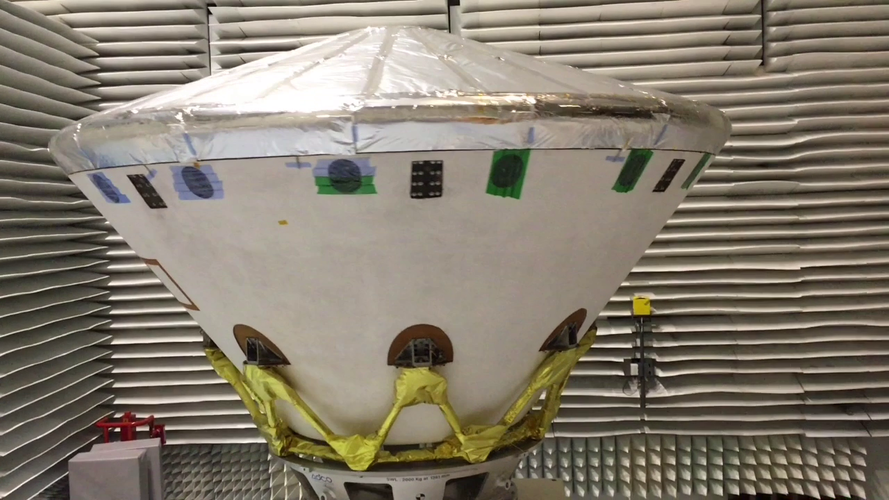
The full deployment sequence was qualified in the first high altitude drop test in 2019 that saw a drop test vehicle deployed from an altitude of 29 km via stratospheric balloon. But in the same test, significant damage to the parachute canopies were observed. This led to a redesign of the parachute bag and a revised packing strategy, together with reinforcements to both parachute canopies. The modified bags and parachutes were successfully tested in the first high speed ground-based dynamic extraction tests at NASA/JPL’s facilities in December 2019. The original damages were also successfully replicated in a series of dedicated ground-based tests at the end of last year, confirming the root causes of the observed anomalies. The canopy damages observed in the November 2020 drop test were significantly less severe than what was observed during the 2019 test, and the inspection of the test data pointed to the early inflation process for subsequent improvements.
“The new parachute canopies are stronger and more robust, and the redesigned bags have already showed promising results, so we are looking forward to finalising the logistics for the next high altitude drop test opportunity in the May-June timeframe, from Kiruna, Sweden,” says Thierry.
As well as a new bag design, a revised approach to folding tackles the problem of the parachute lines twisting upon extraction, which had previously restricted the canopies’ ability to inflate correctly.
A follow-up high altitude drop test is anticipated from Oregon, USA, in the September-November timeframe to maximize the opportunities for testing. If needed, a final opportunity could be considered in February/March 2022 from Oregon.
In the months prior to the high altitude drop tests, slots are being planned using the ground-based dynamic extraction test facility to check the performance if any changes are made to the parachutes, folding or bags prior to flying them. High altitude drop tests require complex logistics and strict weather conditions, making them difficult to schedule, while the ground tests can be repeated on a quick turnaround, buying significantly more time in the test campaign and reducing risk by allowing more tests to be conducted on a short time frame.
“We have learned valuable lessons from the current race to parachute qualification, not least the need for a more robust testing of new technologies much earlier in the mission timeline when developing such complex missions,” says Francois Spoto, ESA’s Mars Exploration Group Leader. “Together with our large industry consortium and international partners we continue to push forward to overcome the final hurdles in order to bring Europe safely to Mars.”



